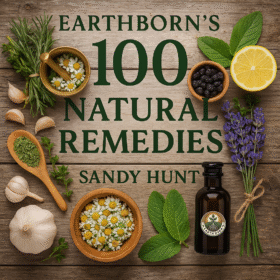-

🌱German Chamomile (Matricaria chamomilla)
German Chamomile (Matricaria chamomilla), also called Wild Chamomile or Scented Mayweed, is a delicate annual herb from the Asteraceae family. With its daisy-like white petals and golden-yellow centers, it has been cultivated for centuries across Europe and Asia. Known for its sweet apple-like scent, chamomile was revered in ancient Egyptian, Greek, and Roman traditions as a calming and healing herb. Today, it remains one of the most popular medicinal plants worldwide. 💊 Medicinal Benefits German Chamomile contains active compounds such as chamazulene and apigenin, giving it powerful medicinal uses: 🌿 Anti-inflammatory – eases skin irritations, wounds, and joint pain. 🌿…
-

🧺Soup Celery (Apium graveolens var. secalinum)
🌱 Introduction and history Meet Soup Celery, also known as Leaf Celery or Chinese Celery (Apium graveolens var. secalinum) — a heritage herb with roots in Europe and Asia. Unlike traditional celery grown for thick stalks, this aromatic variety is celebrated for its intensely flavorful leaves and slender stems. Widely used in Asian cuisine and rustic European soups, it has made its way into gardens worldwide as a compact, culinary all-star. Whether tossed into broths or used fresh in salads, Soup Celery adds an earthy, peppery punch. 💊 Medicinal Benefits Soup Celery isn’t just for flavor — it’s a powerhouse…
-
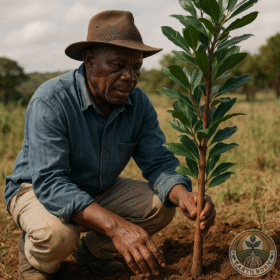
Pepper Bark Tree (Warburgia salutaris)
🌱 Introduction and History The Pepper Bark Tree (Warburgia salutaris), also known as Isibhaha in isiZulu and Peperbasboom in Afrikaans, is a revered evergreen tree indigenous to Southern Africa—most notably South Africa, Mozambique, and Zimbabwe. Belonging to the Canellaceae family, it is named after Dr. Otto Warburg, a German botanist. Traditionally used by indigenous healers, the tree is prized for its aromatic bark and its potent medicinal properties. Due to overharvesting, it is now listed as an endangered species, making sustainable cultivation crucial. 💊 Medicinal Benefits The bark and leaves of Warburgia salutaris are packed with powerful bioactive compounds like… Read more…
-
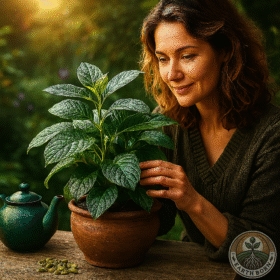
🌱Cardamom (Elettaria cardamomum)
🌱 Introduction and HistoryCardamom (Elettaria cardamomum), often called Green or True Cardamom, is a perennial herb native to the lush forests of southern India and Sri Lanka. Belonging to the ginger family (Zingiberaceae), this aromatic plant has been cultivated for over 4,000 years. Ancient Egyptians chewed the seeds as a tooth cleaner, while traders carried its prized pods along spice routes to Europe and Asia. Today, Cardamom remains one of the world’s most expensive spices by weight, treasured in both culinary and medicinal traditions. 💊 Medicinal BenefitsCardamom is celebrated for its digestive-supporting properties, helping to soothe bloating, indigestion, and nausea.…
-
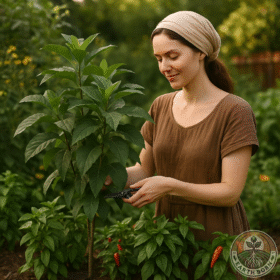
🌱Bitter Leaf (Vernonia amygdalina)
Bitter Leaf (Vernonia amygdalina) is a hardy perennial shrub native to tropical Africa, especially common in Nigeria, Ghana, Cameroon, and Uganda. Known for its characteristically bitter taste, it’s an essential culinary and medicinal plant across West and Central Africa. In traditional homes, the leaves are often washed to reduce bitterness and used in soups and stews. It has been grown and passed down for generations as both food and medicine, earning a revered place in ethnobotany. 💊 Medicinal BenefitsBitter Leaf is a powerhouse of bioactive compounds including vernodalin, vernodalol, and saponins. Traditionally, it has been used to: Help manage blood… Read more…
-

🌱Coriander (Coriandrum sativum)
Here’s your Earthborn-formatted rewrite for Coriander (Coriandrum sativum), fully aligned with your attached Post Format. I’ve also researched a few extra details to make it even more complete, and I’ll prepare the image next as you requested! 🌱 Introduction and History Coriandrum sativum, commonly known as coriander or cilantro, is an ancient herb believed to have been cultivated for over 7,000 years. Native to regions spanning Southern Europe, Northern Africa, and Southwestern Asia, coriander was highly prized by the Egyptians and even found in the tomb of Tutankhamun. Today, it’s a staple herb used worldwide for its fragrant leaves and… Read more…
-
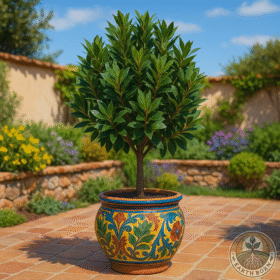
Bay Tree (Laurus nobilis)
🌱 Introduction and history The Bay Tree (Laurus nobilis), also known as Sweet Bay, Bay Laurel, or Grecian Laurel, is a revered evergreen shrub native to the Mediterranean region. This hardy perennial has graced gardens and kitchens for centuries, celebrated for its culinary and medicinal properties. In ancient Greece and Rome, the Bay Tree symbolized victory, wisdom, and protection, often woven into laurel wreaths for heroes and scholars. 💊 Medicinal Benefits Bay leaves are rich in powerful compounds such as eucalyptol, linalool, and methyl eugenol, known for their antimicrobial, anti-inflammatory, and digestive-supporting properties. Traditionally, Bay leaves have been used to…
-
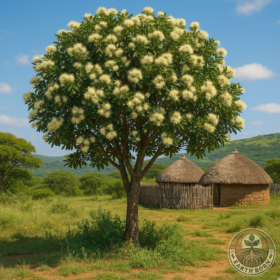
🌿 Grow Guide: Water Berry (Syzygium cordatum)
The Water Berry, also known as Umdoni, Waterboom, or Umthombothi, is a hardy evergreen tree native to Southern Africa, including South Africa, Zimbabwe, and Botswana. Belonging to the Myrtaceae family, it is cherished not only for its beauty and shade but also for its nutritious fruit and healing properties. Let’s explore how you can grow and benefit from this incredible indigenous tree. 💊 Medicinal Benefits Water Berry has been widely used in traditional African medicine. Its leaves and bark are rich in phenolic compounds and triterpenoids, giving it potent antioxidant, anti-inflammatory, and antimicrobial effects. Digestive Aid: Leaf decoctions help soothe… Read more…
-

🌱 Grow Your Own Caraway – Nature’s Digestive Healer(Carum carvi)
Caraway is a biennial herb native to Europe and Western Asia, cherished for both its distinctive, earthy flavour and its powerful medicinal properties. Though not indigenous to South Africa, this aromatic plant adapts well to our climate with the right care – and it’s one of the easiest ways to grow your own spice cabinet! 🌿 Medicinal BenefitsCaraway seeds have been used for thousands of years to soothe digestion. They act as: 💨 Carminative – relieves bloating and gas 🤕 Antispasmodic – eases intestinal cramps and spasms 🧘 Mild sedative – helps with stress-related digestion issues It’s often used in…
-

🌼 Growing Chamomile in South Africa (Matricaria chamomilla)
Chamomile, a dainty annual herb from the Asteraceae family, is treasured not only for its soothing floral scent and pretty white flowers but also for its incredible medicinal benefits. Easy to grow in both garden beds and pots, chamomile brings beauty, wellness, and pollinators into your space. Let’s dive into how to grow and care for this calming herb in South Africa 🌍 💊 Medicinal Benefits Chamomile is best known for its calming effects, often used in herbal teas to ease anxiety, insomnia, and digestive issues. The active compounds chamazulene and apigenin give it anti-inflammatory, antispasmodic, and antioxidant properties. It’s… Read more…


 **Meet Sprout!** Sprout is your friendly gardening companion at Earthborn, always ready with helpful advice on plant care, medicinal herbs, and natural gardening solutions. From seedling to harvest, Sprout provides expert guidance to nurture your garden and your well-being—making gardening easy, fun, and naturally rewarding.
**Meet Sprout!** Sprout is your friendly gardening companion at Earthborn, always ready with helpful advice on plant care, medicinal herbs, and natural gardening solutions. From seedling to harvest, Sprout provides expert guidance to nurture your garden and your well-being—making gardening easy, fun, and naturally rewarding.
